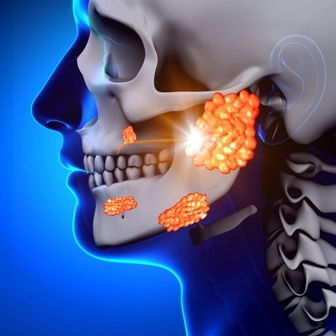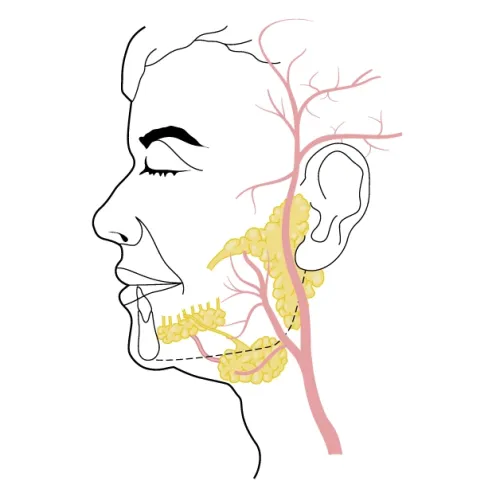Ace Sialolithotomy Reporting With These 4 Useful Tips

Hint: Look also for approach for parotid sialolithotomy procedures.
When your surgeon performs a sialolithotomy (removal of a salivary gland stone), you will have to check patient documentation for complexity of the procedure and the gland or gland duct from which the stone was removed from as these factors play a vital role in your code selection. You will also need to watch out for situations wherein you can report an E/M code additionally.
Use these valuable tips that will help in zeroing on the right sialolithotomy code that you will report for the stone removal procedure.
1. Choose From Three Codes Depending on the Complexity of the Procedure
When reporting the removal of a stone from the salivary gland ducts, you have three CPT®codes to choose from:
To know which of these codes you will have to choose to aptly report for the procedure your surgeon performed, you will first have to look through the patient chart notes to see whether the procedure was simple or complicated.
For determining the complexity of the procedure, you will have to look at certain factors that will help you understand if the procedure that your surgeon performed was complicated or simple. The factors that you need to check in the patient documentation will include:
Accordingly, if your surgeon had to perform deep dissection with removal of a lot of tissue structure to access the salivary gland stone, you will need to reach out for complicated procedural codes. On the other hand, if your clinician could access the stone with removal of very small amount of tissue or if the stone was very superficially located, you will have to report the uncomplicated procedural code. “Your surgeon should also note the time taken for completion of the procedure as this may also help imply a more difficult procedure,” says Barry Shipman, DMD, clinical professor, University of Florida School of Dentistry, Hialeah Dental Center.
The type of closure that your clinician performed after the stone removal will also add to the complexity of the procedure. If your surgeon performed a simple closure, then you will have to look at simple procedure code. If your clinician performed a layered closure after the procedure, reach for complicated procedural codes. “A complicated procedure can be better justified if it is so dictated in the surgical report,” Shipman adds.
Reimbursement tip: Watch documentation closely for chances to report complicated procedural codes instead of 42330. The 2016 relative value units (RVUs) for 42330 are 6.76 while 42335 and 42340 carry 10.92 and 13.50 RVUs. This translates to a Medicare reimbursement of $242.04 for 42330 while you can get paid $390.98 for 42335 and $483.36 for 42340. So, you might end up losing hundreds of dollars if you make errors in your choice of reporting a simple or complicated code. If you are not able to assess whether or not the stone removal procedure was simple or complicated, it is better to query your surgeon to zero in on the right code to report for the procedure.
2. Look at Anatomical Location For Complicated Procedures
When your clinician performs a stone removal procedure, if the procedure is simple, you won’t have bother about which salivary gland your surgeon is operating upon as you have to report only one code for an uncomplicated procedure. You report a simple sialolithotomy with 42330 irrespective of what gland or gland duct from which your surgeon removed the stone. You also report 42330 if the salivary gland stone was removed from the sublingual gland as this is the only code for removal of the stone from this gland or gland duct.
For a complicated removal of a salivary gland stone from the submandibular gland or the parotid gland, you will have to look at other codes depending on which gland or gland duct your surgeon operated upon. When your clinician removed a stone in relation to the submandibular gland, for complex procedures, you have to report 42335 instead of reporting 42330. For complex parotid gland procedures, you will have to opt 42340 in lieu of 42330.
When reporting stone removal procedures for the parotid gland, you will also have to focus on the approach that your clinician used for the procedure. When your clinician approaches the parotid gland stone with an intraoral approach, you will need to report it with either 42330 or 42340 depending on the complexity of the procedure. When your clinician uses an extraoral approach to reach to the stone and remove it, you will have to report the procedure with 42340 only.
3. Check CCI Edits When Reporting Two Stone Removal Procedures
Although you may not commonly come across your surgeon attempting to remove two salivary gland stones from two different salivary glands or gland ducts, you will need to be ready with the apt codes and modifiers to report if such a situation arises.
If you are trying to report 42335 and 42340 together, you will not face any bundling edits and the two codes can be reported for a patient on the same calendar date of service. However, if you are trying to report a simple sialolithotomy with a complicated procedural code on the same calendar date of service, you will face bundling edits.
If you try reporting 42330 with either 42335 or 42340, your claim for 42330 will be denied as 42330 is a column 2 code in the bundling edit with the complex sialolithotomy codes. However, the modifier indicator to these edits is ‘1,’ which means you can overcome the edit bundle by using a suitable modifier. The modifier that you will need to use is 59 (Distinct procedural service) and this modifier needs to be appended to 42330.
4. Watch When you can Report Same Day E/M Codes
Although any evaluation that your surgeon performed on the same calendar date of service will be part of the pre-procedural evaluation and you should not report a separate E/M code for that service, you should be aware of when to report a separate E/M code when the situation warrants it. You can report a separate E/M code for the same visit on which your clinician performs the sialolithotomy if he performs an evaluation that was separate and distinct from the procedure that your clinician was undertaking.
However, like many of the scenarios where you have code bundling if you try reporting an E/M with a procedural code, you also face the same situation here. You will face bundling edits if you try reporting an E/M code with a sialolithotomy code. However, you can overcome the edit bundle if you are reporting an E/M service that was distinct and separate from the procedure that your surgeon undertook. If you are trying to report such a distinct E/M service, you will need to append the modifier 25 (Significant, separately identifiable evaluation and management service by the same physician or other qualified health care professional on the same day of the procedure or other service) with the E/M code you are reporting.




